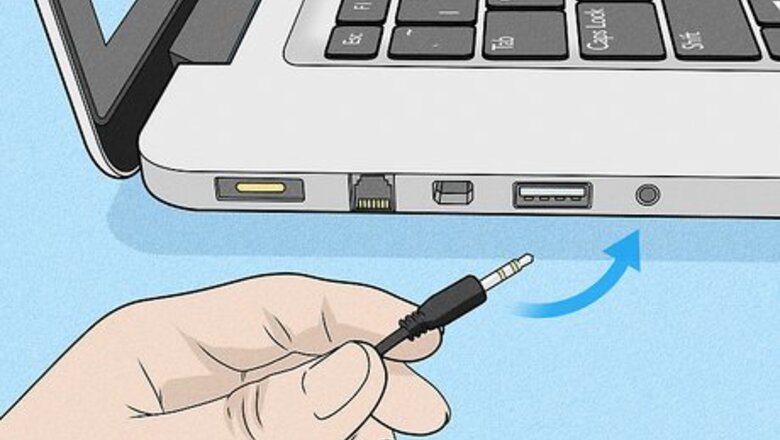
views
- Basic microphones can be connected to your computer via their audio or USB jack.
- Professional mics often use an XLR cable, which requires an adapter to connect to your computer.
- Ensure your microphone has been selected as your computer's primary sound input by making sure it is checked under the Sound > Input section on macOS and the Sound > Recording section on Windows.
Connecting Basic Computer Mics
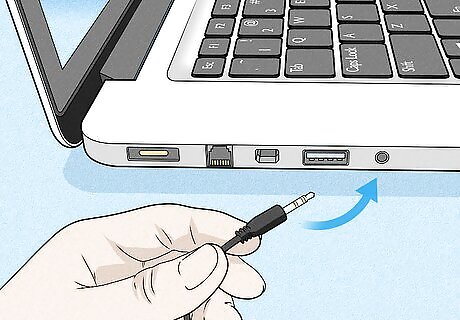
Examine the jack on the microphone. Generally, most basic computer microphones will have one of two varieties of jack: an 1/8" TRS jack, which is essentially the same kind of jack you would find on a pair of headphones, or a USB jack, which is flat. Both of these jacks have corresponding ports on most computers. If you're using an XLR microphone, a quarter-inch jack, or some other variety of mic, skip to the next section.
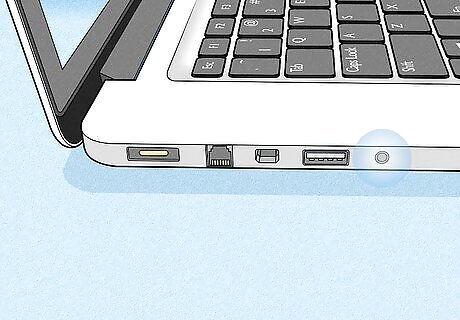
Locate the corresponding port on your computer. Almost all desktop computers will have visible microphone ports on either the front or the back of the tower. Usually, this port will be colored pink, and have a microphone image over it. If you have an 1/8 inch jack, all you have to do is plug it into this port and start testing sound. If you have a USB jack on the end of your microphone, most computers will have two or more USB ports on the side, or the back of the computer. Simply plug the USB jack into one of these ports. Laptops and some more contemporary computers don't have microphone ports, because they're generally outfitted with internal microphones. It's usually possible to plug into the headphone port on most computers, however, and adjust your sound settings later.
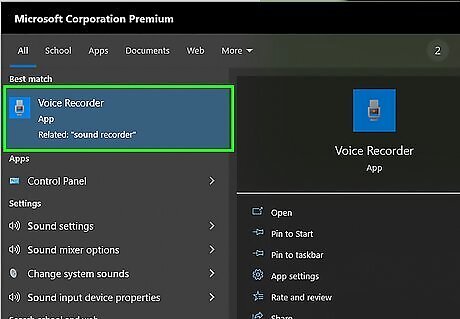
Test your new microphone with the recording software of your choice. The easiest and quickest way to test your levels and check your settings is to go to your input sound options and make sure that the device you just plugged in is visible, and that it is selected for use. Open a recording program and attempt to use the microphone and set the levels. On Windows, you can use the Sound Recorder. On a Mac, Quicktime or GarageBand are your best options. Some manufacturers offer their own software to work in conjunction with their external microphones. These offer greater control over the unique features of the mic. If you're not getting a signal, skip to the last section for troubleshooting tips.
Connecting Professional Mics
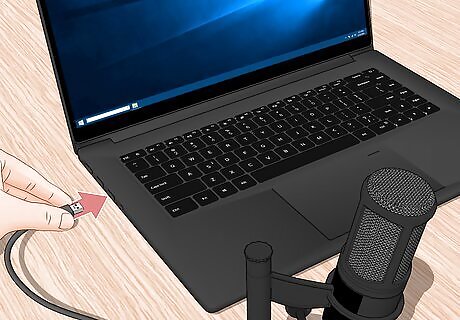
Examine the jack on the end of the microphone. Higher grade music microphones, condenser mics, and other professional gear will generally require an adapter or a converter cable before you plug them in. These range in price, and will vary depending on the type of microphone you're trying to input into the computer. If you see a triangle of prongs on the end of the end of the microphone, that's an XLR mic, and you'll need to get either a cable which converts the XLR jack into the 1/8 inch port, a converter box which will convert it into USB, or a mixer. If you are using the mic for music recording, it likely requires Phantom Power and will therefore not work with a cable converter. We recommend using a mixer, or investing in an Audio Interface. Consult this wikiHow guide for more information. If the jack is a quarter-inch, the size of a guitar cable, you'll need to purchase an adapter cable that will convert into either USB or 1/8 inch size, and plug it into the mic port or headphone port. These cables are usually quite cheap.
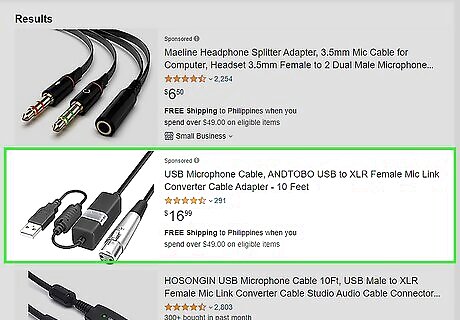
Get the appropriate converter. Both of these types of mics will need to be connected to some kind of adapter before you plug them into the computer. Because these microphones are typically higher quality, it's best to invest in good adaption equipment to keep the signal as strong as possible. XLR mics can be adapted relatively cheaply with cables or a USB converter box, but some users find that this can be "crackly," losing some of the presence of good microphones. For the best sound quality, invest in a mixing board with a USB output. Quarter-inch to eighth-inch converter cables are widely available and pretty cheap to buy. You can find them at any electronics store or online electronics retailer.

Test your new microphone with the recording software of your choice. The easiest and quickest way to test your levels and check your settings is to go to your input sound options and make sure that the device you just plugged in is visible, and that it is selected for use. Open a recording program and attempt to use the microphone and set the levels. On Windows, you can use the Sound Recorder. On a Mac, Quicktime or GarageBand are your best options. Some manufacturers offer their own software to work in conjunction with their external microphones. These offer greater control over the unique features of the mic. If you're not getting a signal, skip to the last section for troubleshooting tips.
Connecting a Bluetooth Mic
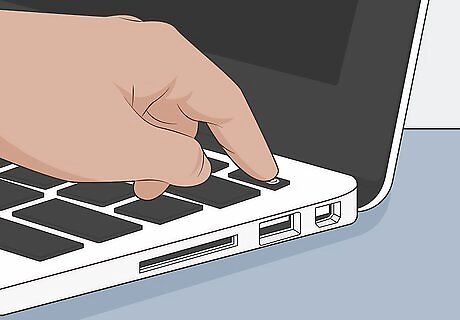
Power on both your computer and your Bluetooth microphone. A Bluetooth microphone can be connected to your computer without any cables at all. Make sure both devices are powered on to get started. If your computer does not support Bluetooth technology (most newer computers do), you may need to purchase and use a Bluetooth dongle instead.
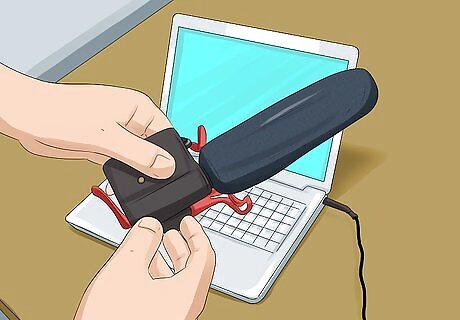
Put your microphone into pairing mode. This often involves tapping or holding the Bluetooth button on the device. Consult your manufacturer's guide to learn how to put your microphone into Bluetooth pairing mode (sometimes referred to as discovery mode).
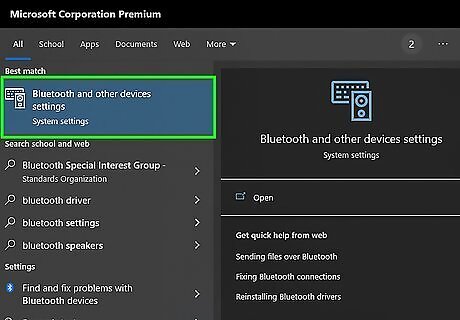
Open your computer's Bluetooth settings. On Windows, find the ^ icon on your toolbar and click on the Bluetooth icon. On a Mac, click on the Apple icon in the top-left corner of your screen and click System Preferences.... Then, click Bluetooth in the sidebar.
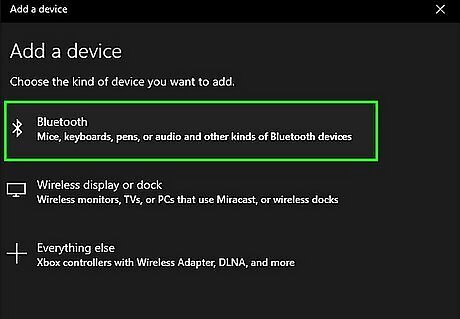
Pair the devices. On Windows, click Add device to pull up a list of available devices, where you should find your microphone waiting to be paired. On a Mac, you should already see a list of available devices. It may take a moment for your microphone to appear as an option.
Troubleshooting Common Problems
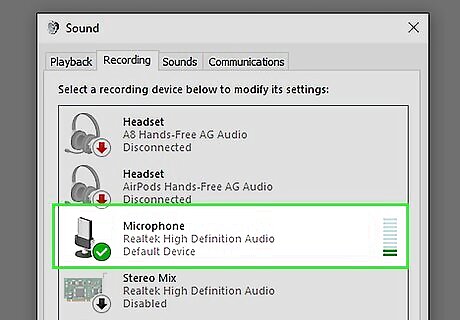
Check your sound input settings. If you're not getting a signal, navigate to your computer's sound settings and make sure that the correct device is selected, and the levels are appropriate. On a mac there are no drivers to get in the way, so the only other thing you need to do is to go into System Settings and click on "Sound," then select "Input." Make sure that the microphone is checked, rather than the built-in microphone. On a PC, go into the Control Panel and clicking on "Hardware and Sound," then click on "Sound" and it should pop up another window. At the top, click on "Recording" and you should see your microphone listed. If it doesn't have a green check mark next to it, it isn't selected. Click on it and click properties. You can then change the settings at the bottom to "Use this Device" and it will automatically use it next time it is plugged into your computer.

Set the input level. On most computers, you'll be able to control the level of the input volume. With lower quality mics, it'll usually need to be set somewhat high to get a half-way decent signal, but you don't want to blow out the levels, either. It's usually best to set it somewhere in the default range, about 50%. On a Mac, you can do this in the System Settings, under "Sound." On a PC, you can do this in "Hardware and Sound," under "Sound."
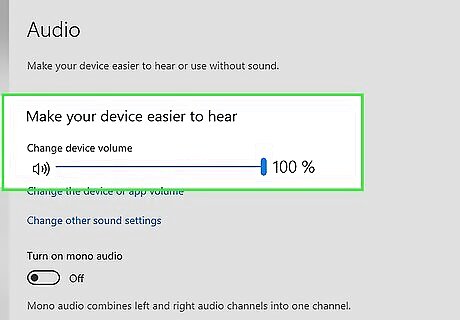
Check your speaker and computer volume. If you have external speakers, or have headphones plugged in, you need to double-check and make sure that the volume levels are adjusted properly, as well as the settings on your desktop, or you may not be hearing anything.
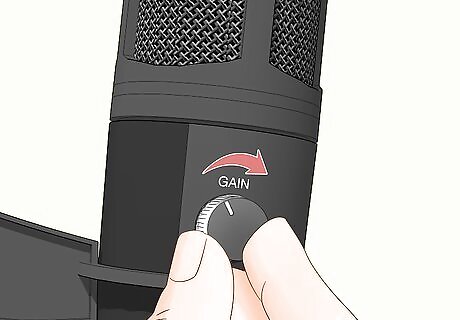
Check the settings on the microphone. Obviously, you need to make sure the microphone is switched on, the cable is plugged in flush, and that you've got any other settings adjusted correctly, depending on the microphone. Some condenser mics, and speaking microphones will have a variety of toggle settings, some of which might be louder, or feature a wider range of sound than others. Switch between them to get a sense for what sounds best for your purposes.
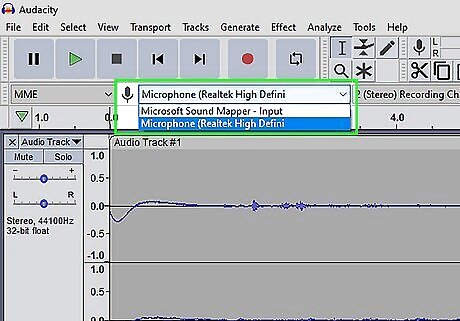
Check the setting in the specific program that you're using. Different audio processing programs will have a variety of input settings as well, that you need to check. Some recording software may still be set to pick up internal mics, or audio from other sources, even if you changed it in your system settings.
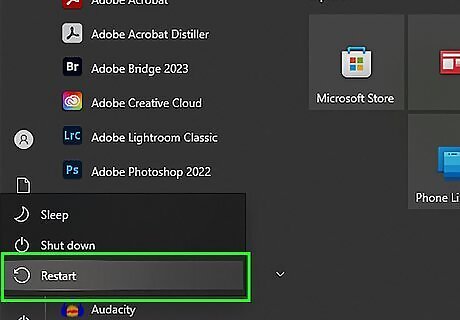
Try restarting your computer. Sometimes, you'll need to close the program you're trying to use at least, or even restart to get some computers to recognize a new piece of hardware you've plugged in. If the microphone still doesn't work then try using another microphone or try using the microphone on another computer. This should help you figure out whether it is the computer or the microphone which is at fault.


















Comments
0 comment